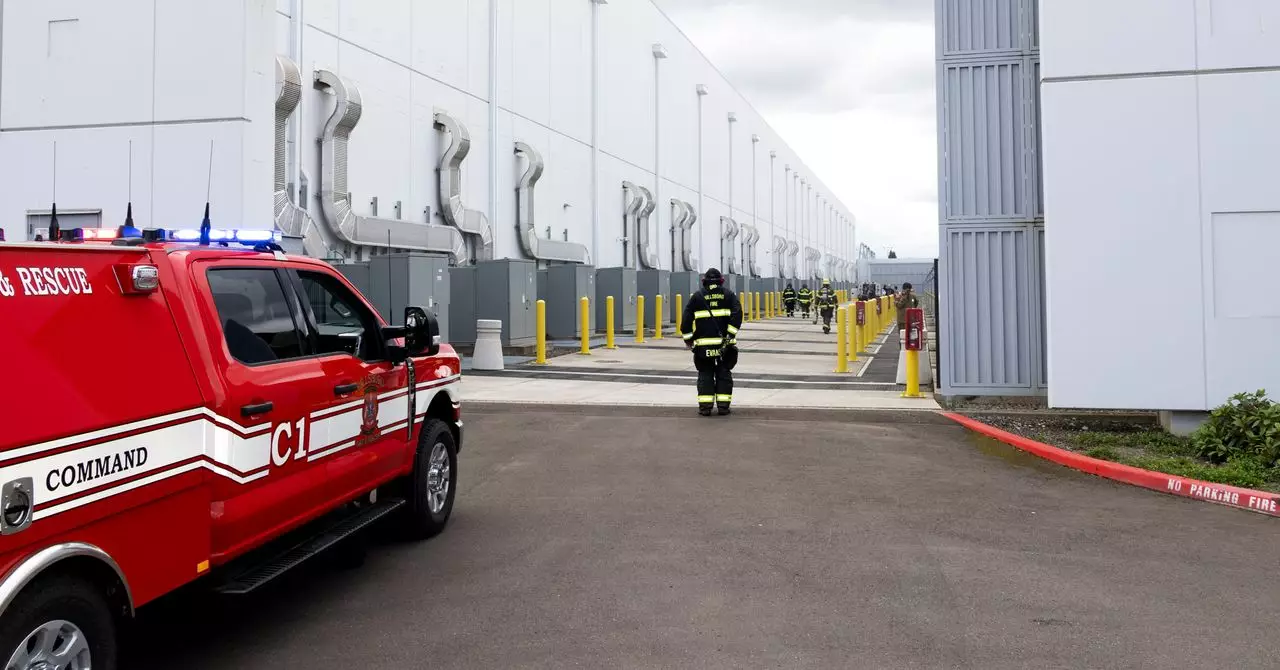In an era where digital connectivity underpins almost every facet of our lives, the vulnerability of data centers remains an unnerving reality. The recent fire at a high-profile data facility operated by Digital Realty, servicing Elon Musk’s X platform, underscores a critical flaw in our dependency on seemingly resilient data infrastructure. Despite their vital role, these colossal servers are not immune to catastrophic failures, especially as demands for AI and data processing surge exponentially. This incident exposes an uncomfortable truth: beneath the surface of technological sophistication lies a fragile architectural layer prone to sudden, destructive failures.
Is this a sign that we are pushing these facilities beyond their limits? As the hunger for advanced AI grows, so does the strain on data centers. The fire—initially suspected to have stemmed from lithium-ion batteries but later attributed to electrical or mechanical failures within the power system—should alarm us about the overlooked risks lurking in our digital backbone. These incidents aren’t isolated anomalies; they are symptoms of a deeper systemic issue rooted in escalating complexity, energy consumption, and inadequate safety measures.
The Rising Threats from Power Systems and Technology Overload
At the core of the incident was a Schneider Electric Galaxy VX UPS—a vital component designed to ensure uninterrupted power supply during outages. Such systems are standard in data centers, acting as the nervous system that keeps relentless server operations alive. Yet, paradoxically, these same systems are potential ticking time bombs. Large battery packs, reminiscent of electric vehicle batteries, are vulnerable to overheating, electrical malfunctions, and high-stress loads, especially when cooling and monitoring are deficient.
The fire investigation’s findings—that the blaze likely originated within the UPS cabinet due to electrical or mechanical failure—highlight a distressing reality. As data centers become increasingly dense and powerful, their power equipment faces higher stress levels, magnifying the probability of failures. Over time, inadequate oversight of these complex electrical systems can lead to overlooked faults, increasing the risk of fires that can cause extensive damage, economic losses, and service disruption.
The connection between technological overload and fire vulnerability should serve as a wake-up call. Our relentless pursuit of AI efficiencies, cloud storage, and big data analytics is often decoupled from parallel investments in safety protocols. When failure occurs, the consequences are not minimal—they threaten the backbone of our digital economy.
The Industry’s Response and the Hidden Risks
In the aftermath of the Hillsboro blaze, Digital Realty emphasized that the fire was electrical in nature, dismissing any link to lithium-ion battery failures. They also promised to introduce improvements to prevent future incidents. Yet, these assurances often ring hollow without transparent details and concrete actions, especially given the complex nature of data center systems. It is easy to focus on post-incident fixes, but the real challenge lies in proactively mitigating risks before catastrophe strikes.
Furthermore, this incident raises questions about the broader industry practices. Are fire safety and system redundancies sufficiently prioritized relative to expansion speed and technological innovation? Experts like electrical engineer Russell Carroll point out how insufficient cooling and poor thermal management contribute directly to such failures. The intense power loads in modern data centers produce massive heat, which, if unmonitored or inadequately dissipated, can escalate into fires, threatening large-scale outages.
The situation calls for a paradigm shift. Companies need to recognize that as operational demands and energy consumption skyrocket, so must their safety protocols. Advanced fire detection, real-time temperature monitoring, and redundancy in critical electrical components must become standard features rather than optional extras. Ignoring these essentials risks turning our digital infrastructure into ticking time bombs amid a rapidly accelerating technological landscape.
The Need for a Holistic Approach to Data Center Safety
This incident shouldn’t be dismissed as an isolated event. Instead, it must spark a strategic reevaluation of how data centers are designed, maintained, and insured against fire risks. A proactive approach involves integrating rigorous safety standards, investing in cooling infrastructure, and adopting smarter, more resilient power systems designed to detect and suppress faults swiftly.
Moreover, regulatory frameworks and industry best practices must evolve to keep pace with technological advancements. The industry’s complacency regarding fire risks could prove disastrous, particularly as the appetite for AI and big data applications continues to push capacity and complexity to dangerous levels.
While data centers are crucial arteries of the digital economy, they must also be viewed as vulnerable eco-systems that require ongoing vigilance. Understanding their vulnerabilities—especially concerning electrical failures—should no longer be an afterthought but a central element of operational strategy. Only through meticulous design, continuous innovation in safety, and unwavering commitment to risk management can we hope to prevent the next catastrophic blaze from exposing the fragile underbelly of our interconnected world.

